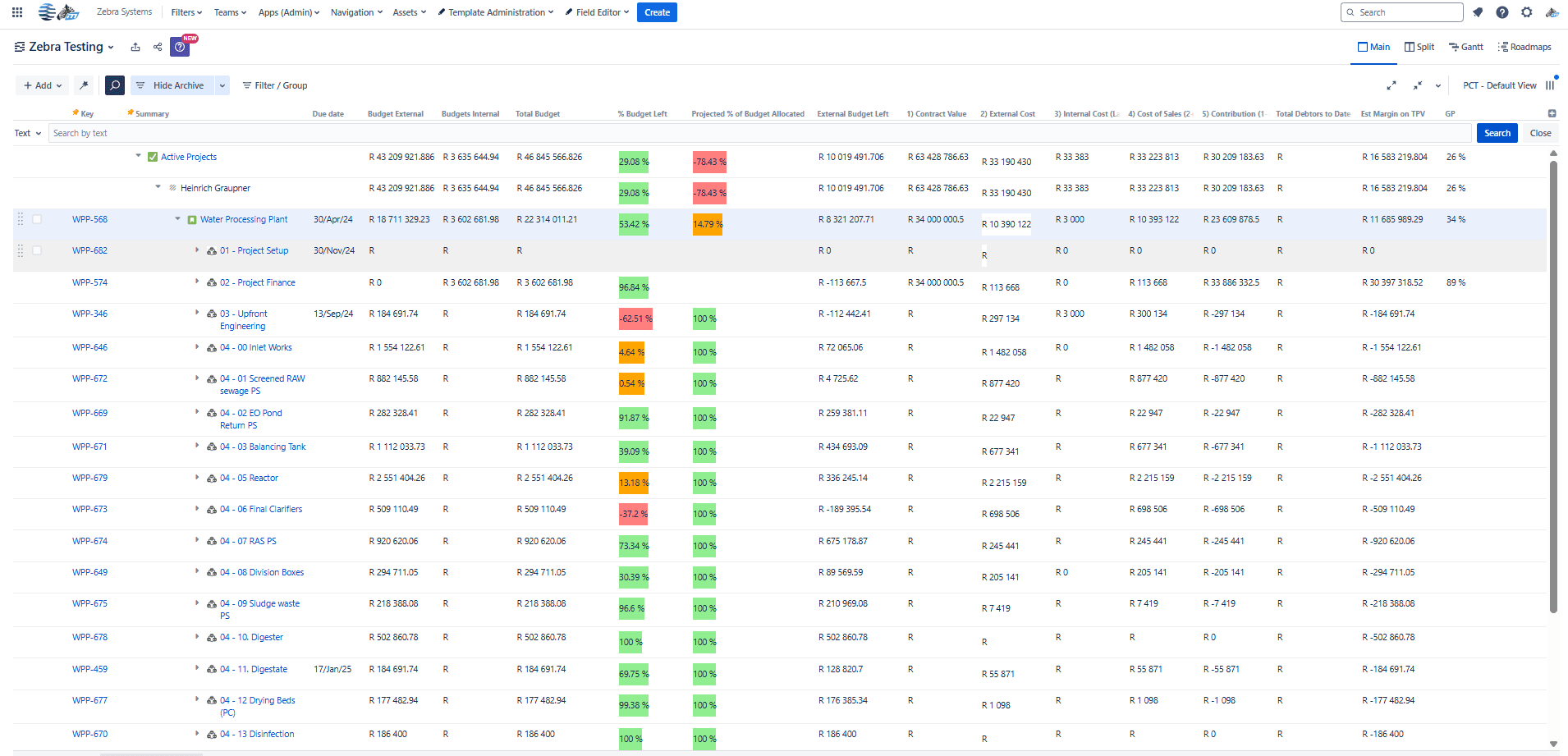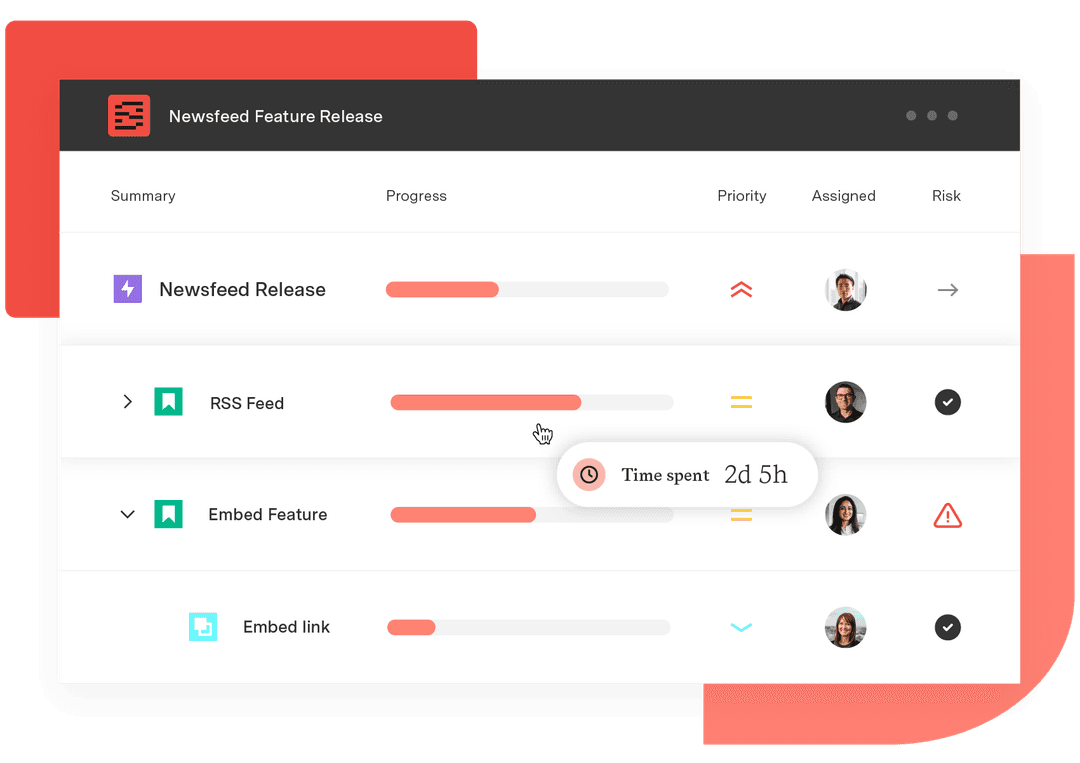How Structure PPM unlocked real-time governance for Matogen Zebra
Tempo Team
When it comes to data management tools, the need for flexibility, scalability, and intuitiveness has grown massively. Employees often use an eclectic collection of tech, looking for simple, powerful tools that naturally enhance their daily workflow.
Making tech make sense is something Matogen Zebra knows all too well. They design custom operational systems and provide full systems architecture for companies in engineering, manufacturing, and many other industries in South Africa and across the world.
However, Matogen Zebra was in need of an upgrade to their own project management methodology. It was time to leave the world of spreadsheets behind and modernize their approach.
They needed something that could enable stakeholders to view all their ongoing client and project data at a glance, process that information in different ways, and be secure enough to change who has access to each layer of data.
They found the solution to their tooling problem: Structure PPM.
We spoke with Desirie Du Toit, a process engineer at Matogen Zebra, about the process of finding a new tool and the impact Structure has had on their workflows.
Meeting people where they are
Before Structure PPM, much of their project and financial data was tracked manually using disconnected systems and the aforementioned spreadsheets. That meant teams were often making high-impact decisions without having a complete or current picture of project health.
“Change management was a major factor – we had to find something that had a 'Microsoft Excel' feel to it,” Du Toit says. “We needed something our users were familiar with that they could start using right away, but something far more powerful under the hood.”
Beyond usability, Matogen Zebra needed:
A scalable architecture that could support multiple projects and teams
User-specific access control, ensuring data security across layers
Live data synchronization for fast, accurate decision-making
The ability to handle large volumes of information with minimal friction
“Structure was the closest match to what we needed,” says Du Toit. “It lets us build clean views of our data that our teams could understand and use immediately. The formulas took a bit of learning, but the support from Tempo made that easy.”

“Now, we have 560+ people working in Structure. This is a combination of our personnel and systems developed for clients.”
Building data-driven architecture with Structure
Structure PPM gave Matogen Zebra the power to organize their Jira data with dozens of custom options – but all in a single view. Instead of isolating tasks and teams, they could build layered Structures that connected everything from epics down to subtasks.
Du Toit explains: “Structure PPM enables us to display data according to our architectural hierarchy levels. It made the implementation process easy to understand, even for non-technical users.
“I think without Structure our lives would be a lot harder. With it, we can now extract live data where there might have been no extraction methods available in the past. Sort of a zero-to-hero metric.”
At the core of their solution is what Matogen Zebra calls a “Project Cost Tracker” – a Structure template that’s now standard across almost every client engagement for the team. It integrates financial data, timelines, labor tracking, and more into one cohesive view.
Users can see:
Total project value
Live project budgets
Budget remaining vs. spent
Gross profit margins
Project timelines and task progress
The financial impact of pending purchase orders
This kind of visibility, once impossible without hours of manual work, is now built directly into their project workflows.

“Structure formulas do all the heavy lifting in the background,” Du Toit says. “Everything’s automated. As long as each person does their part in the workflow, the system updates itself – and stakeholders can make decisions safely knowing the data is backing them.”
From manual calculations to live, connected data
With live updates and synchronized views across departments, users can quickly understand the impact of their actions.
Take, for example, approving a financial purchase requisition. With Structure, stakeholders can see in real-time:
The current budget of the related project
How much budget is remaining in that department or subtask
Whether the expense will push the project over budget
How the change will affect overall profitability
“This is especially important for our manufacturing clients, who operate on tight margins and high cost-of-sale expenses,” Desirie notes. “With Structure, they can evaluate the full impact of a purchase before making the decision and not after the money’s already spent.”
Structure also supports visual cues, such as color-coded indicators for budget thresholds. If a project dips below its remaining budget, Structure can flag the issue immediately with no digging required (and with a color of your choice).
Portfolio governance: Channel developer productivity into business value.
Download the guideThis kind of instant clarity is invaluable in large projects involving 1,000 to 3,000 Jira tickets.
“There is so much information out there,” Du Toit explains. “In 90% of cases, it’s impossible to make decisions without the kind of system that we’ve built with Structure. Otherwise, you are left doing too much effort and manual processes to get anywhere close.”
The hidden engine behind every decision: Structure formulas
The engine that makes this all possible is Structure’s formula language. Every metric, every summary, and every insight is powered by formulas running in the background.
“We’ve become experts in Structure formulas,” Du Toit says. “There’s not a single column in our Structures that isn’t calculated. That’s how we deliver so much value, so quickly.”
These formulas enable interconnected, context-aware insights across projects, departments, and teams. As long as the workflow is followed, the data takes care of itself.
“If I do my part and the next person does theirs, I know it’s all taken care of. That’s the power of Structure PPM and having a system you can trust. Desirie Du Toit, Process Engineer, Matogen Zebra,
Structure adapts to clients – not the other way around
For final thoughts on how Structure has helped Matogen Zebra with their long-term success – Du Toit discussed how the tool enabled them to develop systems with interfaces that are client and process specific as each client wants their data to be displayed differently.
“Most platforms require clients to change how they work,” says Du Toit. “We use Structure to make the platform adapt to the client instead. That’s a huge differentiator.
With the foundation that Structure PPM provided, Matogen Zebra has not only improved their client outcomes – it has reduced time to value, improved planning accuracy, and built a reputation for delivering scalable, intelligent systems tailored to each client’s needs.

“Structure also allows us to have a much better turnaround time than other platforms, as we are able to get live data to do calculations using structure formulas. As structure provides live updates, we are able to provide the live reworked data back to the client.”
Structure PPM for your team
Struggling to get your Jira data in order? Chaos in your projects and tasks getting away from stakeholders?
Structure PPM is here to help. It is a powerful project visualization tool that becomes your team’s decision-making engine. Whether you’re managing complex engineering workflows, financial approvals, or hybrid project methodologies, Structure adapts to the way you work and delivers the data you need to move forward.
Matogen Zebra has completely upgraded the way dozens of different companies approach their work day-to-day – and Structure has been right there alongside them to help.
Request a demo today and find out for yourself what the power of data-driven project management could do for you and your teams.
Sign up for a demo
Register

